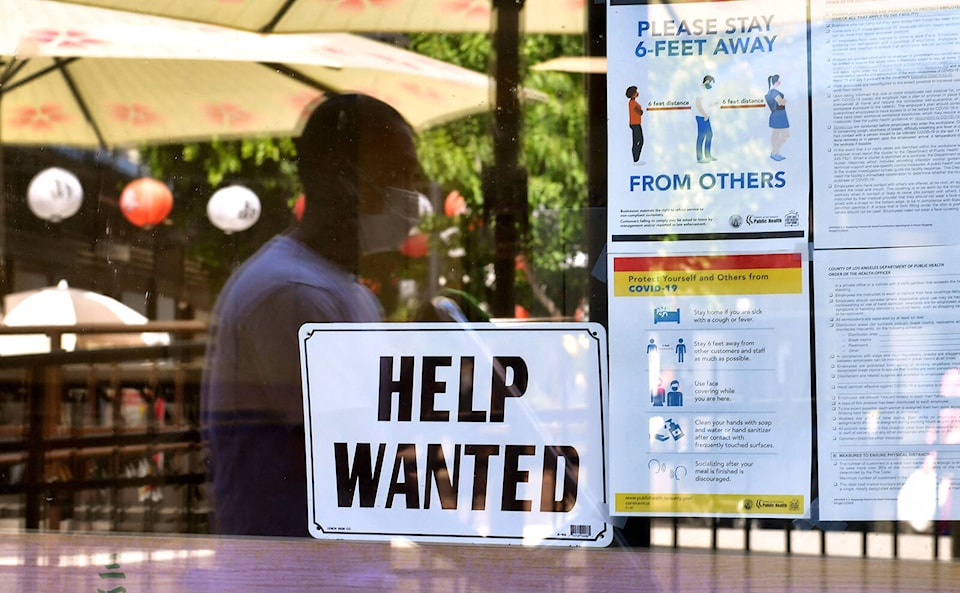Help wanted signs are common at businesses across Canada, and in some sectors a shortage of workers is taking a toll.
At fast food outlets, signs offer payment above minimum wage. Skilled workers are in high demand. Small businesses, especially in construction and hospitality and tourism, have been struggling for months to find staff.
Health services in some places are being adjusted due to staffing challenges and the ongoing demands of the pandemic.
READ ALSO: Grim 2022 outlook for B.C.’s small business sector
This is a far cry from the start of the COVID-19 pandemic, when the unemployment rate in Canada rose sharply.
More than one million jobs were lost in March 2020. In addition, many businesses restructured, resulting in workers having reduced hours. The next month, another two million jobs were lost and the national unemployment rate reached 13 per cent.
High unemployment levels have been seen in past years as well. Those who remember the recession of the early 1980s will recall a time when the unemployment rate reached 13.1 per cent. A decade later, in the early 1990s, it reached 12.1 per cent. The only time in Canadian history with a higher unemployment rate was the Great Depression in the 1930s. During that time, unemployment topped 25 per cent and may have been as high as 30 per cent.
The economy has since shown signs of recovery and jobs have been added since the cuts near the start of the pandemic.
The initial struggles associated with job losses have been replaced with hiring challenges for employers.
Without adequate staffing, it is impossible to meet the service levels many have come to expect. And if employers offer higher wages to attract workers, this will eventually show itself in higher prices for consumers.
When staffing shortages affect medical and health-care professionals, patients are affected with longer wait times for appointments and treatments.
If we are to have a solid health-care system, and if businesses are to be able to function during these times, workable solutions to the ongoing labour shortage must be found.
– Black Press Media
Do you have something to add to this story, or something else we should report on? Email:
editor@theprogress.com
Like us on Facebook and follow us on Twitter.
